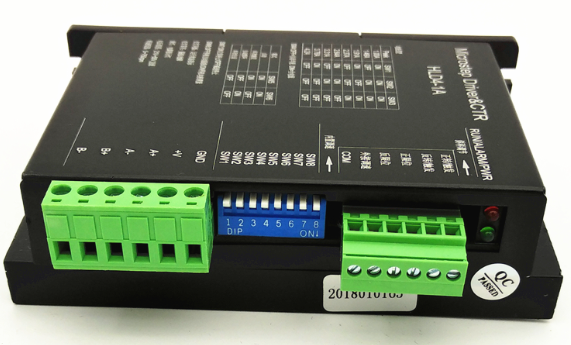Exploring stepper motor drives: a practical guide to selection and commissioning. This article will explore the basic principles and functions of stepper motor drives and how to select and debug the right drive for your application.
Knowing this knowledge will help you better apply and optimize your stepper motor drive system.
Exploring stepper motor drives: a practical guide to selection and commissioning
NEMA 17 42mm Stepper Motor Driver 57 Pulse Control DM542 Driver
First, the practical guide for the selection and debugging of stepper motor driver
The stepper motor driver is a key component in a stepper motor system that converts the pulse signal emitted by the controller into the appropriate current to drive the stepper motor.
In order to achieve precise control of stepper motors, it is essential to select and commission the right drive.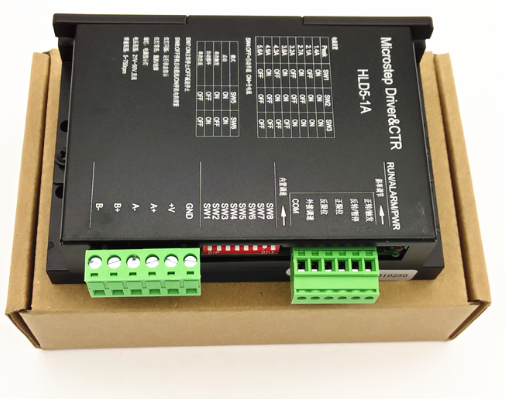
NEMA 17 Stepper Motor Driver Pulse Control DM542 Driver
This article will help you understand the basic principles of stepper motor drives, their functions, and how to select and debug the right drive.
Second, the basic principle and function of stepper motor driver
The main function of the stepper motor driver is to receive the pulse signal sent by the controller and provide the appropriate current and phase sequence to the stepper motor according to the set parameters.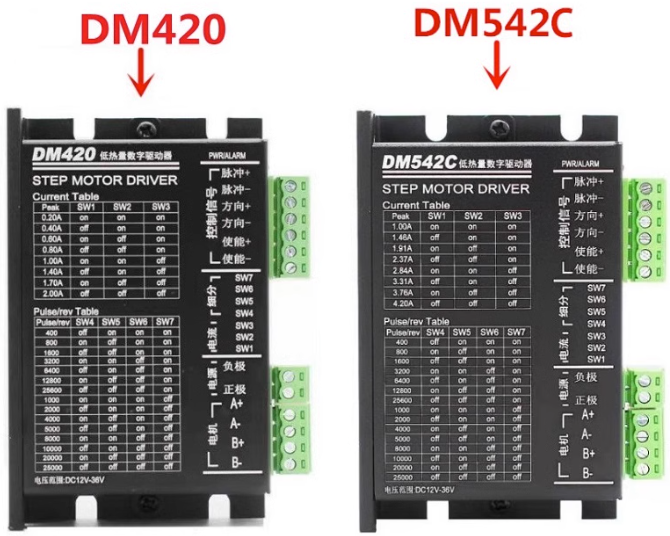
DM420 VS dm542c stepper motor driver
The drive is also responsible for protecting the motor from abnormal conditions such as overload, overheating, etc.
Third, the key factors in choosing a stepper motor driver
1. Motor type: according to the type of stepper motor you use (such as two-phase, four-phase, five-phase, etc.), select the corresponding drive.
2. Motor parameters: consider the rated voltage, current and power of the motor, and select the drive that matches the motor parameters.
3. Subdivision function: According to the application’s requirements for accuracy, select the driver that supports the microstep subdivision function.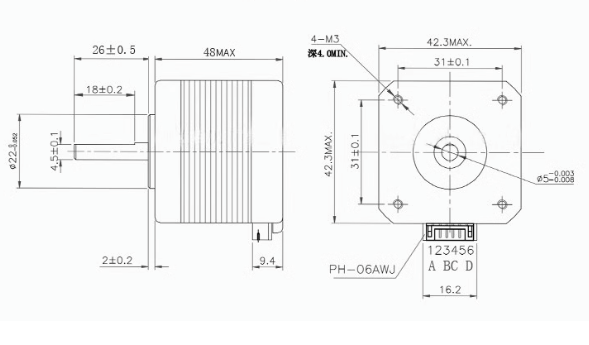
0.55Nm nema 17 stepper motor size drawing
4. Power requirements: choose a drive that suits your system’s power conditions, such as DC or AC input power supply.
5. Control interface: confirm that the control interface of the driver matches the controller, such as pulse/direction input or communication protocol.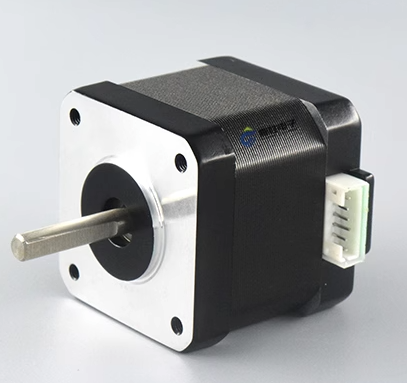
NEMA 17 stepper motor 42BYGH48 body height 48mm – 42mm stepper motor large torque 0.55Nm for printers, engraving machines
6. Price and quality: Under the premise of meeting technical requirements, weigh price and quality, and choose a drive with appropriate cost performance.
Fourth, the key steps of stepper motor drive debugging
1. Wiring and installation: according to the requirements of the drive manual, correctly connect the stepper motor, drive and controller, and ensure that all wiring is stable and reliable.
2. Parameter setting: according to the actual application requirements, set the relevant parameters of the driver, such as current limit, microstep subdivision, etc.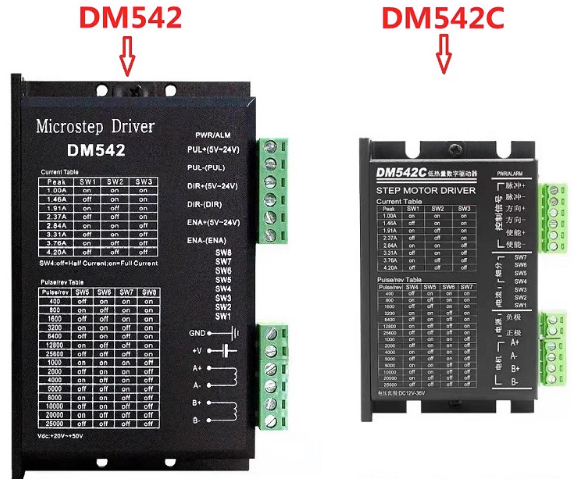
DM542 VS dm542c stepper motor driver
3. Current adjustment: adjust the driver output current to ensure that the motor will not overheat or overload during operation. Refer to the rated current parameters of the motor and drive to avoid setting the current too high or too low.
4. Speed and acceleration adjustment: according to the actual load and motion requirements, adjust the pulse frequency output by the drive, so as to control the speed and acceleration of the stepper motor. Proper settings will help improve the operational efficiency and stability of the system.
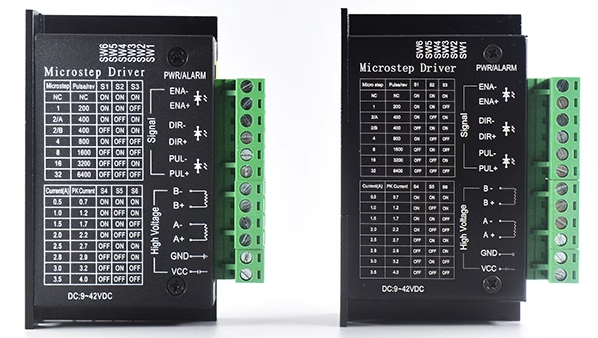 tb6600 stepper motor driver
tb6600 stepper motor driver
5. Microstep subdivision setting: Adjust the microstep subdivision setting of the driver according to the application’s requirements for accuracy. Higher subdivision values will improve position accuracy, but may reduce torque output.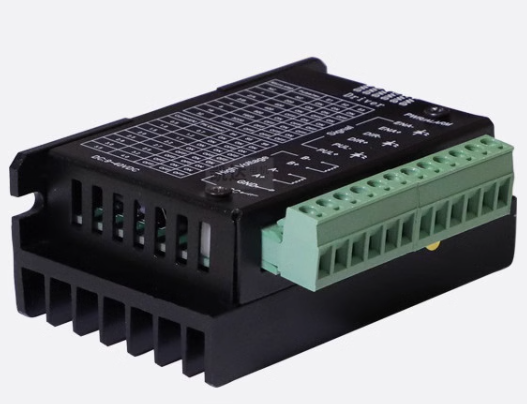
42mm 57mm stepper motor driver 32 subdivision 4.0A 9-42V China manufacturer supply
6. Protection function setting: configure the overcurrent, overvoltage, overtemperature and other protection functions of the driver to ensure that the motor is not damaged under abnormal circumstances.
7. System testing and tuning: After completing the above steps, the entire stepper motor system is tested. When testing, please pay attention to the running stability, noise, temperature rise and other indicators of the motor.
If you find a problem, please adjust the relevant parameters in time and test again. In practice, you may need to further tune the system to your specific needs.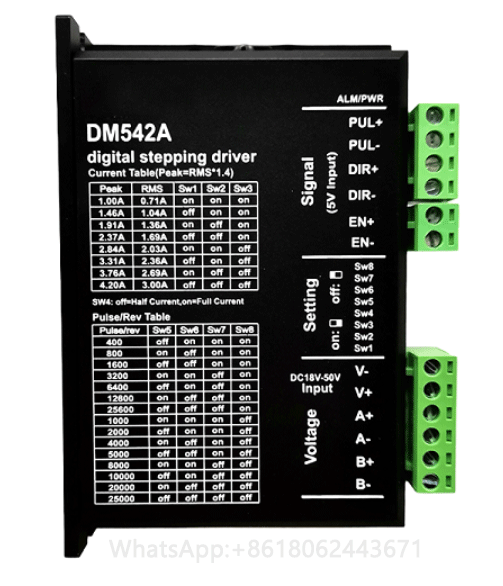
Exploring stepper motor drives: a practical guide to selection and commissioning
By following the above key steps, you can complete the commissioning of the stepper motor driver and ensure the normal operation and performance optimization of the stepper motor system.
Please note that during commissioning, it is important to follow the relevant safety specifications to ensure the safety of personnel and equipment.


